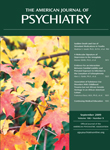Early Childhood Depression
Abstract
Although empirical evidence has recently validated clinical depression in children as young as age 3, few data are available to guide treatment of early childhood depression. Considering this gap in the literature, a novel dyadic psychotherapeutic model, Parent Child Interaction Therapy–Emotion Development, based on a well-known and effective manualized treatment for disruptive preschoolers, is currently being tested for use in depression. To balance safety and efficacy, dyadic developmental approaches are currently recommended as the first line of treatment for preschool depression. In the absence of data on the safety and efficacy of antidepressants in preschool depression, these agents are not recommended as a first- or second-line treatment at this time. This article provides an illustrative case example of preschool depression, outlines key considerations in differential diagnosis, and describes this novel form of treatment. It also clarifies parameters for the rare situations in which antidepressants may be tried when psychotherapeutic options fail and depression is severe and impairing.



